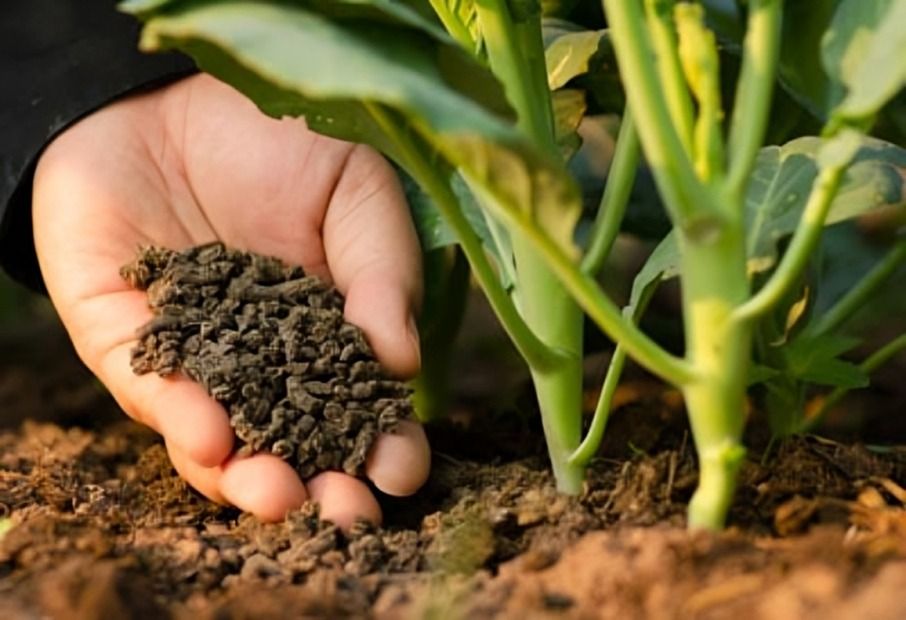
“
Understanding nutrient-rich soil facts is crucial for any gardener or plant enthusiast aiming to optimize growth and sustainability. This educational guide provides insights about soil composition, nutrient availability, and sustainable practices that promote robust plant health. 1
1
”
Soil provides essential nutrients like nitrogen, phosphorus, and potassium that plants need to grow healthy and strong. These nutrients support various plant functions such as photosynthesis, energy transfer, and overall development, leading to lush and vigorous plant growth.1
Healthy topsoil is crucial for our planet’s existence, supporting 95% of food production. Unfortunately, we’re losing topsoil at an alarming rate—between 10 and 40 times faster than it forms. 2
Good soil structure allows for proper aeration, which is crucial for root respiration. Adequate oxygen in the soil supports root health and growth, enabling plants to absorb nutrients effectively and maintain overall vitality. 3
Soil pH influences the availability of essential nutrients to plants. Optimal pH levels ensure that plants can effectively absorb minerals from the soil, preventing deficiencies and promoting balanced growth. 4
Adding organic matter to soil enhances its fertility by improving nutrient retention and promoting beneficial microbial activity. This addition supports healthy plant growth by enriching the soil with essential nutrients and enhancing its overall structure. 5
Mulching with organic materials helps regulate soil temperature, conserve moisture, and suppress weeds. This practice creates a more stable growing environment, fostering healthier plants by protecting soil and retaining moisture. 6
Using compost enriches the soil with organic nutrients, improving its structure and fertility. Composting provides a steady supply of nutrients to plants, leading to more robust growth and better yields. 7
Different soil types, such as clay, sand, and loam, affect plant growth in various ways. Understanding the characteristics of your soil helps in selecting appropriate plants and adjusting care practices to match soil conditions. 8
Compacted soil restricts root growth and water infiltration, which can hinder plant development. Regular aeration helps to alleviate soil compaction, promoting healthier root systems and better overall plant growth. 9
Applying balanced fertilizers provides additional nutrients that soil may lack, enhancing plant growth and improving yields. Fertilizers help address nutrient deficiencies, ensuring that plants have access to essential elements for optimal development. 10
Beneficial soil microbes play a crucial role in breaking down organic matter and releasing nutrients for plant use. These microbes foster a symbiotic relationship with plants, enhancing soil fertility and plant health. 11
Periodic soil testing is essential for determining nutrient levels and soil pH. This information guides necessary adjustments in fertilization and soil amendments, ensuring that plants receive the optimal conditions for growth. 12

Soil erosion can disrupt plant roots and reduce nutrient availability. Implementing erosion control measures, such as using mulch or planting ground cover, helps maintain soil integrity and supports healthy plant growth.
Healthy soil structure supports robust root development by anchoring plants securely and facilitating efficient nutrient uptake. Well-developed roots are essential for plant stability and overall resilience. 13
Proper water drainage prevents soil from becoming waterlogged, which can suffocate roots and lead to plant diseases. Ensuring adequate drainage helps maintain a healthy environment for plant roots, promoting better growth.14

Adjusting plant care practices based on seasonal changes, such as modifying watering frequency and fertilization schedules, optimizes plant growth. This approach helps plants adapt to environmental fluctuations and thrive throughout the year.
Planting cover crops enriches the soil, reduces erosion, and suppresses weeds. Cover crops improve soil structure and fertility, creating better conditions for subsequent plantings and enhancing overall soil health. 15
Using organic methods for pest and disease control helps minimize soil contamination and supports a healthier ecosystem. Organic pest control methods protect beneficial soil organisms and contribute to a balanced environment. 16
Rotating crops helps prevent the depletion of specific soil nutrients and reduces the incidence of plant diseases. Crop rotation promotes soil health by diversifying nutrient use and breaking pest and disease cycles. 17
Adopting sustainable soil management practices, such as minimal tillage and crop diversification, preserves soil health for future generations. These practices maintain soil productivity and support long-term agricultural sustainability. 18


